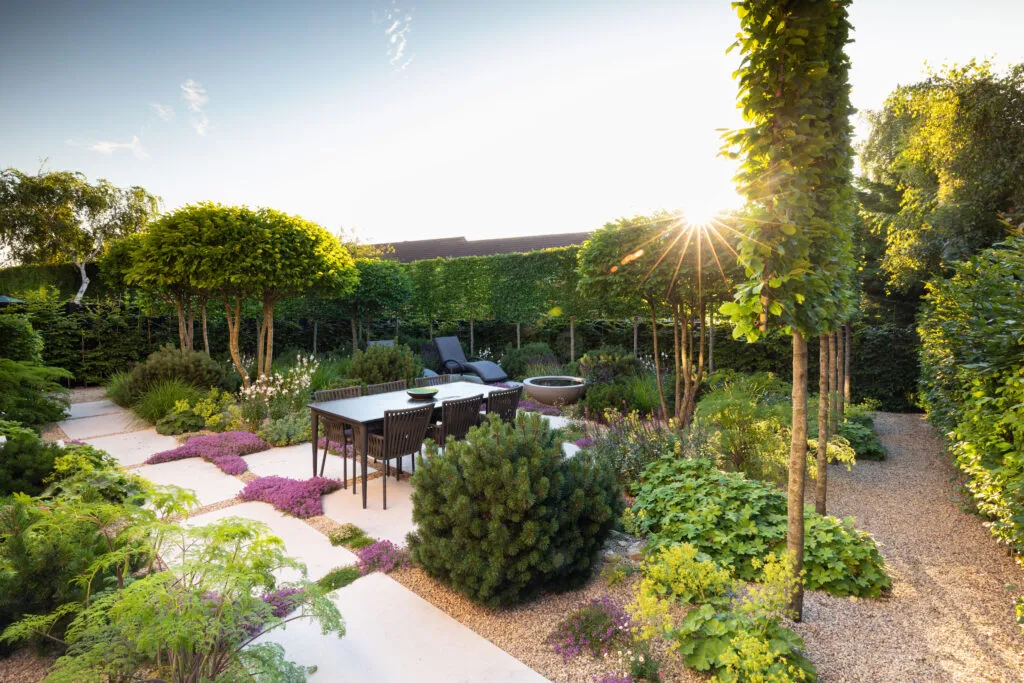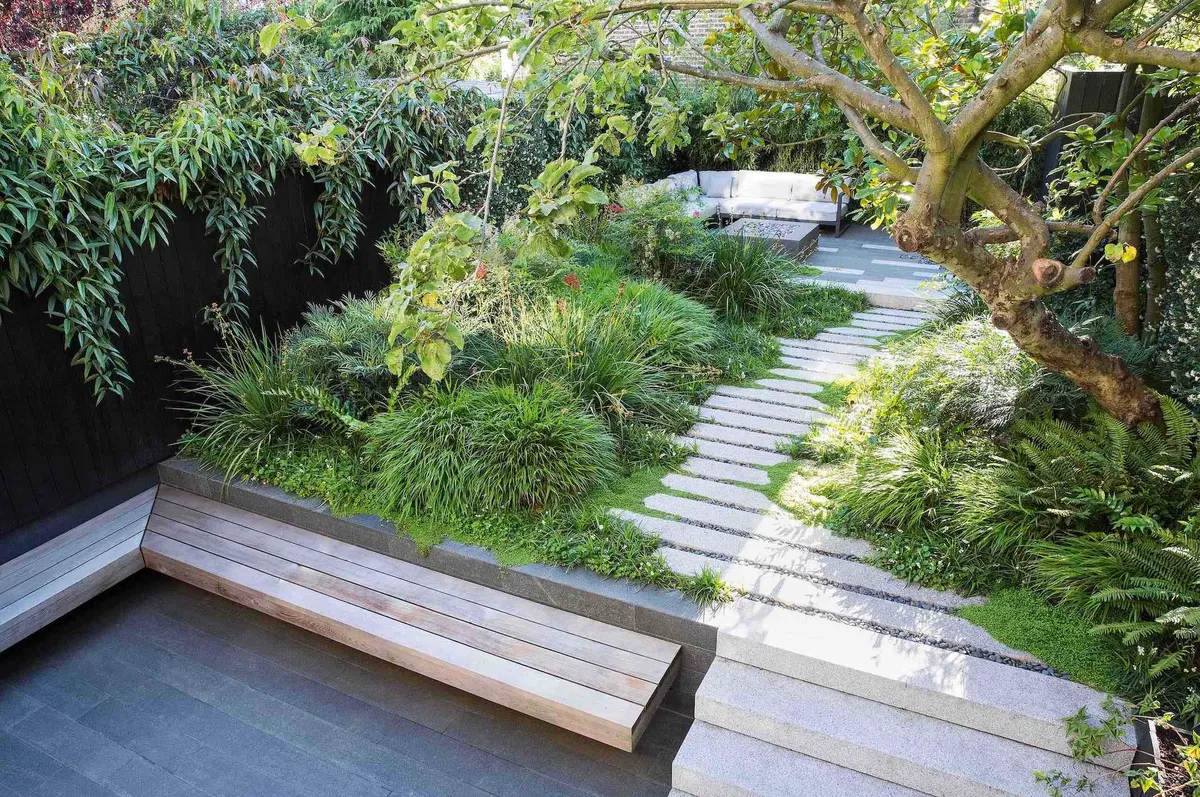Having a small garden doesn't have to be limiting. There are plenty of designers who relish the opportunity to create an oasis of green in a tiny plot. But small garden design can hold its challenges and if you have limited space, every corner is key. Below Harry Holding, Caroline Clayton and Harriet Farlam and Ben Chandler, some of the leading garden designers around, have compiled a list of small garden design ideas you need to think about for your own space.
You may also like
- Trees for small gardens
- A deceptively simple small garden designed by Sheila Jack
- Modern small garden ideas
Top small garden design ideas
Add depth
Don’t be afraid to plant trees and shrubs towards the centre of a small garden rather than around the edges. This will bring depth to the space and can help create a sense of mystery – a small garden looks and feels bigger when you can’t read it all as one.

Create a journey
Not being able to see what’s at the end of the garden or what’s around a corner gives a reason to venture through the space, as well as making it more exciting. At its simplest, a meandering path can often add more interest and intrigue than a straight one.
Include water
Every garden should have water – it’s the easiest way to boost the biodiversity of a space. Even a very simple water bowl will attract wildlife, add a sense of calm and draw down the sky into the garden – a lovely thing amongst tall trees or dense buildings.
Here are more expert tips at using water in the garden

Be bold
Rather than having lots of small plants or pots, go big and bold in small gardens. One large container has so much more impact than five small ones. Likewise, trees or shrubs such as amelanchiers, acers and crab apples can be surprisingly effective in small spaces.

Keep it simple
In a smaller garden, it often pays to keep your material palette really refined. Simple is best. Choose two or three hard landscaping materials and stick to them. That’s not to say things have to be boring – bricks or pavers can be laid in different patterns for visual interest.

Don’t skimp on beds
It might feel counterintuitive to make planting beds bigger in a small garden, but generously sized areas of greenery will help to make the space feel larger.
Foliage matters
Think about foliage texture and colour. In a small garden, contrasting foliage can make a huge difference. Aim for a few larger specimens, underplanted with a pared-back palette. Fatsia japonica and Mahonia eurybracteata subsp. ganpinensis 'Soft Caress' offer interesting year-round foliage and out-of-season nectar for pollinators. You can underplant these with Liriope muscari, hellebores and ferns.

Think about verticals
Cloaking walls and fences in evergreen climbers will create a more coherent look when a garden is surrounded by a mix of different fences or walls, and make a small garden feel larger. Choose plants such as Trachelospermum jasminoides with its gorgeously scented, star-shaped summer flowers and Clematis armandii, which brightens the garden in early spring with its profusion of white flowers.
Lose the lawn
Work out what space is needed for your furniture elements and functional areas such as a dining table or outdoor kitchen and plant up the rest of the garden for a more immersive experience.

Choose good paving
Think about how the hardscaping materials you choose will weather, and look in the depths of winter. Limestone is a harder, less porous material than sandstone, which will quickly become covered in moss and dirt in a shady spot where it remains wet for long periods.
Add level changes in small garden design
Consider the topography of the garden and embrace level changes. Stepping up from one area to another creates the feeling of entering or leaving different rooms, enhancing the feeling of a larger space. Just two or three steps will help to create this effect.

Don’t forget seating for your small garden
Create places in the garden to enjoy at various times of the day: morning coffee on the steps or a late evening drink on a west-facing terrace, for example, entice you to use all of the space and create more areas to explore. Multifunctional and integrated seating makes efficient use of the space while creating a clean, uncluttered look.
Inject seasonality
A small garden is normally on view all year round, so it’s important to consider the planting for each season. Include a balance of evergreens for structure, deciduous plants such as grasses that look good throughout the winter months, along with spring bulbs and summer- and autumn-flowering perennials for pops of colour.